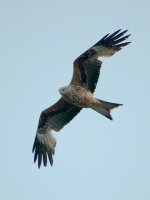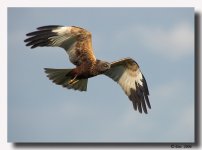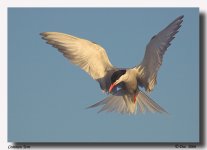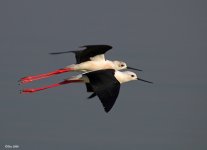Took myself Red Kite spotting over the weekend. Saw lots and managed a few hundred photos, many of which were close to full frame using my Big-T and D70s.
I knew exposure would be a challenge - bright sky (intermittent sunshine) and trying to follow the birds at 500mm was a challenge in itself.
Most pics taken with centre weighted metering and used exposure compensation by a few stops to negate the bright background when the bird wasn't in the centre of the frame.
Most of the results were disappointing, being quite badly underexposed. About 10 were OK but could have been better (best attached).
Please could anyone give any tips on which settings would give me best results in these conditions to try and avoid silhouettes?
Thanks in anticipation.
Kev
I knew exposure would be a challenge - bright sky (intermittent sunshine) and trying to follow the birds at 500mm was a challenge in itself.
Most pics taken with centre weighted metering and used exposure compensation by a few stops to negate the bright background when the bird wasn't in the centre of the frame.
Most of the results were disappointing, being quite badly underexposed. About 10 were OK but could have been better (best attached).
Please could anyone give any tips on which settings would give me best results in these conditions to try and avoid silhouettes?
Thanks in anticipation.
Kev
Attachments
Last edited:







